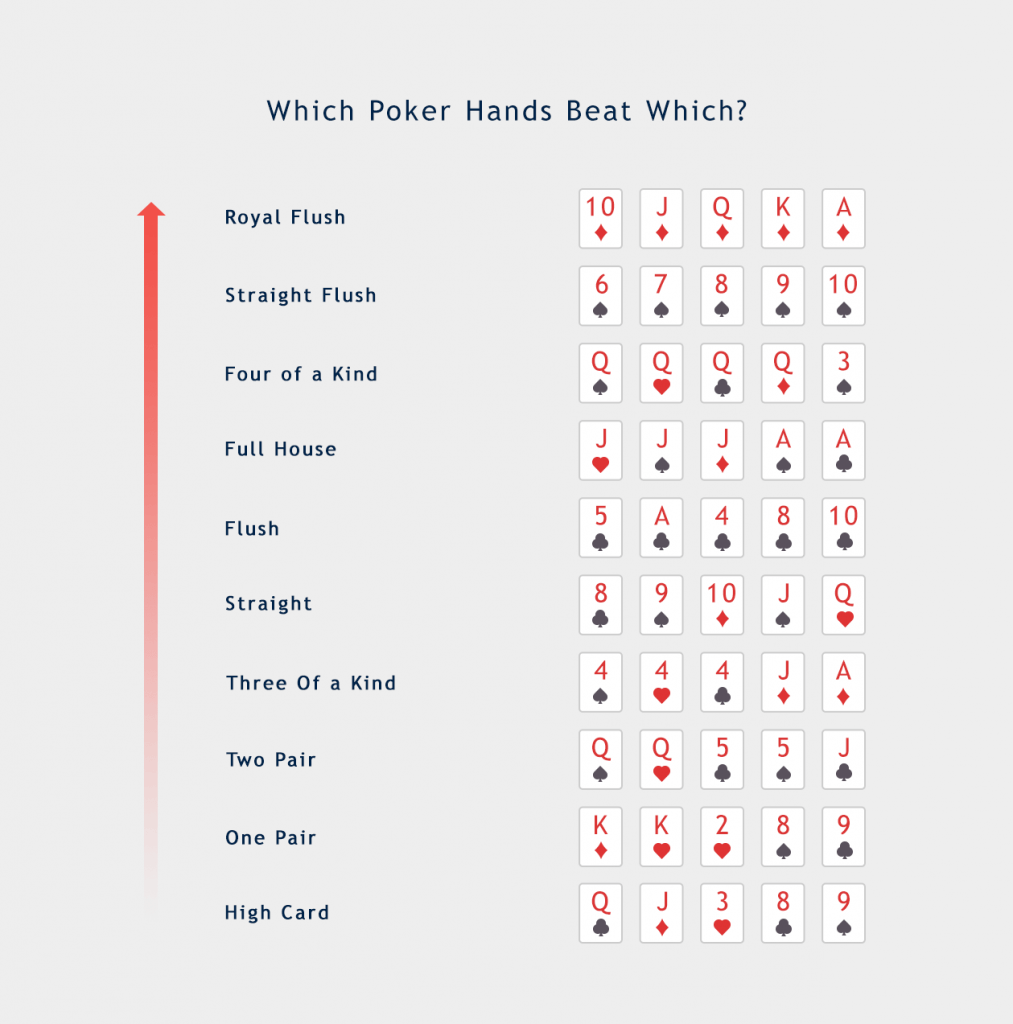
Playing poker is about playing the odds. The following list gives the odds for outcomes in Texas Hold'em hands. When you realize how heavily the odds are stacked against you, you may want to rethink going all-in before the flop with two suited cards. Use the odds to your advantage: 1 percent (1-in-100): Percentage of. Texas Hold'em Poker probabilities. When calculating probabilities for a card game such as Texas Hold'em, there are two basic approaches. The first approach is to determine the number of outcomes that satisfy the condition being evaluated and divide this by the total number of possible outcomes. There are 40 straight flushes (ten in each suit, from the 'wheel' A-2–3–4–5 to the 'royal' 10-J-Q-K-A.) The total number of five card hands is 52C5 = 52! 5!) = 2,598,960. So the probability of getting dealt a straight flush in five cards is 40 / 2,598,960 = 1 / 64,974 = 1.5391E-05. There are 9 unknown cards left that could complete your flush so you have 9 outs out of 47 total unknown cards (52 cards in the deck – your 2 cards and – 3 more on the flop). This is how Texas Hold'em odds are calculated. Rounded to the nearest tenth of a percent, 9/47 = 19.1, or a 19.1% chance to hit your flush on the turn.


Playing poker is about playing the odds. The following list gives the odds for outcomes in Texas Hold'em hands. When you realize how heavily the odds are stacked against you, you may want to rethink going all-in before the flop with two suited cards. Use the odds to your advantage: 1 percent (1-in-100): Percentage of. Texas Hold'em Poker probabilities. When calculating probabilities for a card game such as Texas Hold'em, there are two basic approaches. The first approach is to determine the number of outcomes that satisfy the condition being evaluated and divide this by the total number of possible outcomes. There are 40 straight flushes (ten in each suit, from the 'wheel' A-2–3–4–5 to the 'royal' 10-J-Q-K-A.) The total number of five card hands is 52C5 = 52! 5!) = 2,598,960. So the probability of getting dealt a straight flush in five cards is 40 / 2,598,960 = 1 / 64,974 = 1.5391E-05. There are 9 unknown cards left that could complete your flush so you have 9 outs out of 47 total unknown cards (52 cards in the deck – your 2 cards and – 3 more on the flop). This is how Texas Hold'em odds are calculated. Rounded to the nearest tenth of a percent, 9/47 = 19.1, or a 19.1% chance to hit your flush on the turn.
Playing poker is about playing the odds. The following list gives the odds for outcomes in Texas Hold'em hands. When you realize how heavily the odds are stacked against you, you may want to rethink going all-in before the flop with two suited cards. Use the odds to your advantage:
Straight Flush Probability Texas Holdem Odds
1 percent (1-in-100): Percentage of time that no player holds an Ace or a King at a table in a 10-handed game
1 percent (1-in-100): Percentage of time that if you hold two suited cards, you'll flop a flush
6 percent (about 1-in-20): Percentage of time that five community cards will give pocket suited cards a flush
6 percent (about 1-in-20): Percentage of time that you'll be dealt a pocket pair
8 percent (about 1-in-12): Percentage of time that you'll hit at least trips after having a pair on the flop
12 percent (about 1-in-8): Percentage of time that you'll flop trips if holding a pocket pair
12 percent (about 1-in-8): Percentage of time that two more cards will flop in the same suit as a suited pocket pair
19 percent (about 1-in-5): Percentage of time that the five community cards will at least trip your pocket pair
32 percent (about 1-in-3): Percentage of time that you'll pair one of your cards on the flop (with no pocket pair)
33 percent (about 1-in-3): Percentage of time that you'll make a full house or better after having trips on the flop
35 percent (about 1-in-3): Percentage of time that you'll make a flush on the turn or river if you have four cards to a flush after the flop